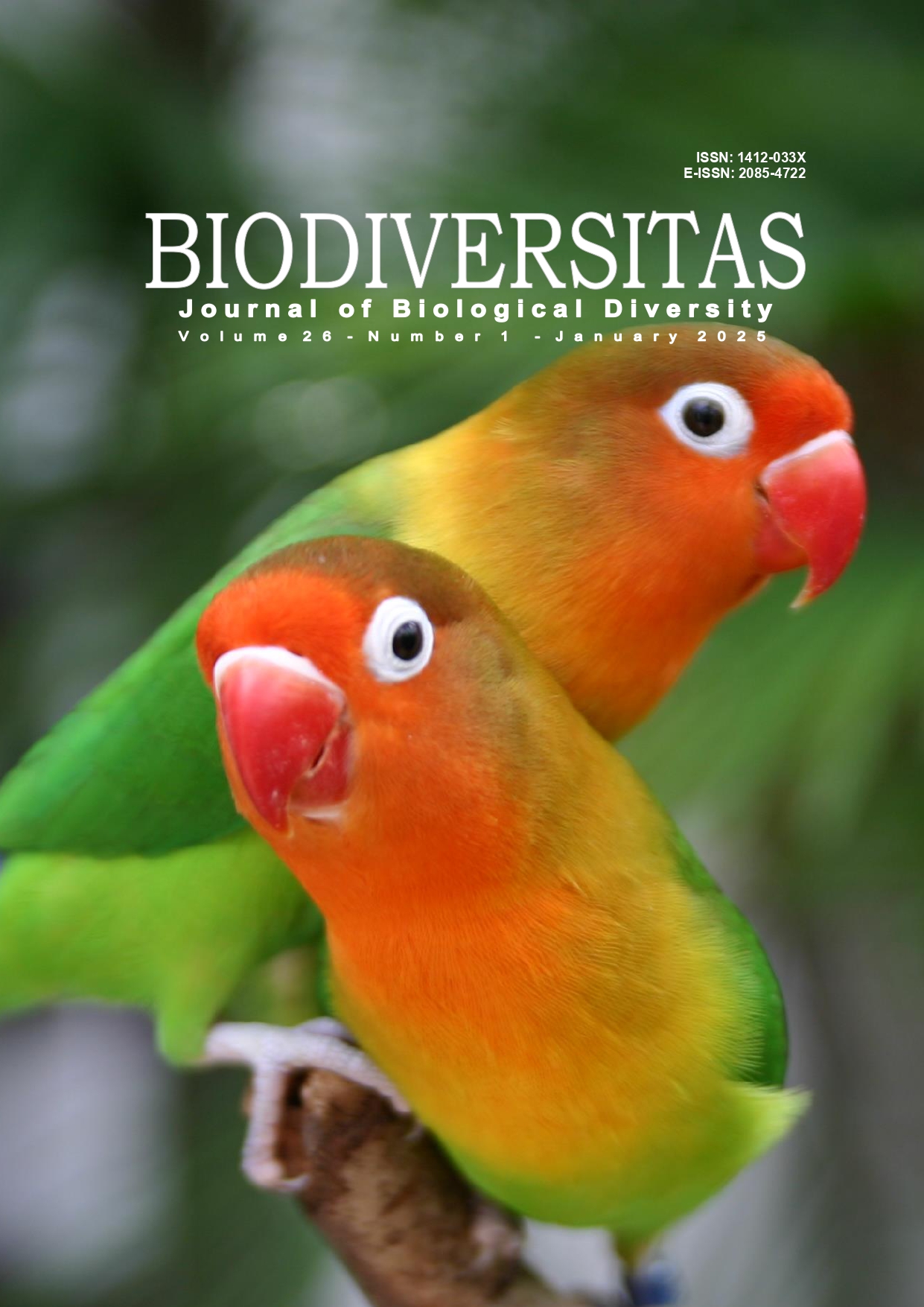Exploring habitat characteristics and herpetofauna diversity in the Kamojang and Darajat Geothermal Power Plants, West Java, Indonesia
##plugins.themes.bootstrap3.article.main##
Abstract
Abstract. Megantara EN, Husodo T, Mutaqin AZ, Kendarto DR, Wulandari I, Pujianto MP, Shanida SS, Afriyanti F. 2025. Exploring habitat characteristics and herpetofauna diversity in the Kamojang and Darajat Geothermal Power Plants, West Java, Indonesia. Biodiversitas 26: 203-222. Considering their vital role in preserving ecological stability, herpetofauna are essential indicators of the environment's health. From 2019 to 2023, this project examines the herpetofauna's habitat and variety surrounding the Kamojang and Darajat Geothermal Power Plants, West Java, Indonesia. The study's objectives were to monitor species diversity, evaluate habitat conditions, and understand how land use changes affect these species. Data were gathered by vegetation analysis and visual and auditory encounter surveys in various land cover types, including natural forests, mixed gardens, pine plantations, shrubs, swamps, riparian, artificial gardens, craters, and replanting areas. The results identified 37 species of herpetofauna, including 18 amphibians and 19 reptiles. Vegetation analysis revealed that natural forests and riparian zones supported the highest species richness. In contrast, areas with monoculture vegetation, such as pine plantations, had lower biodiversity. Natural habitats tend to have lower temperatures and high humidity, creating ideal conditions for specialist species requiring a stable and humid environment. In contrast, artificial habitats have warmer temperatures and lower humidity, favoring generalist species, which are more adaptable to variable environmental conditions. Artificial habitats also provide diverse microhabitats, such as open areas for basking and shade from plant canopies, which favor certain reptiles and amphibians. Adapting species to these different conditions reflects the importance of maintaining a balance between natural habitats to support specialist species and artificial habitats for more flexible species. This combination of abiotic factors and habitat structure is key to the sustainability of herpetofauna diversity in both areas. Habitat quality was affected by human activities such as land conversion and agriculture, which decreased the diversity of herpetofauna and the vegetation structure. This study emphasizes the significance of habitat conservation and sustainable land management in maintaining biodiversity in geothermal areas.

